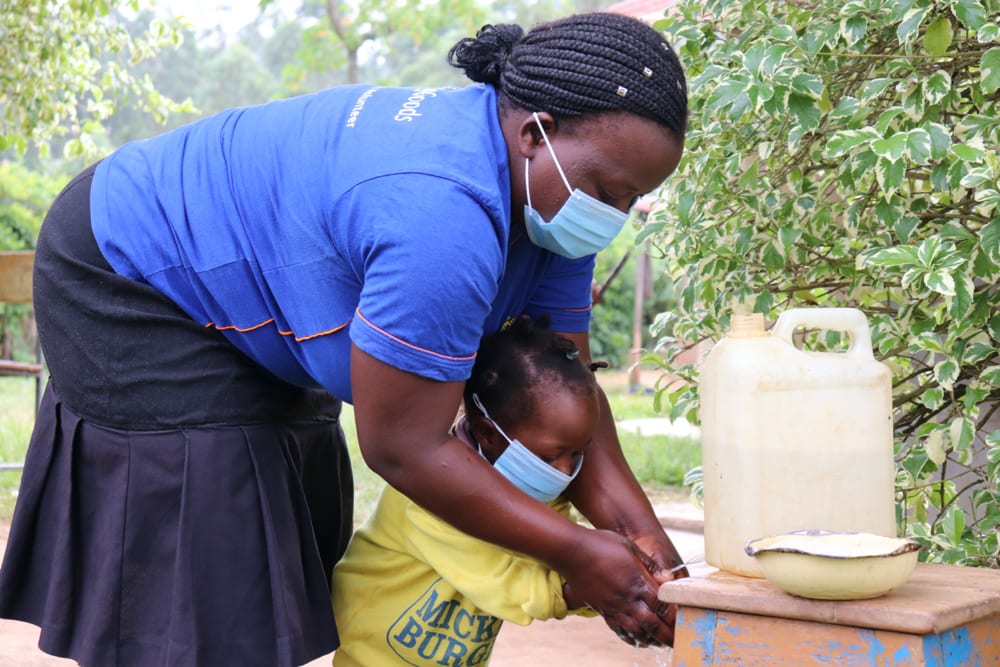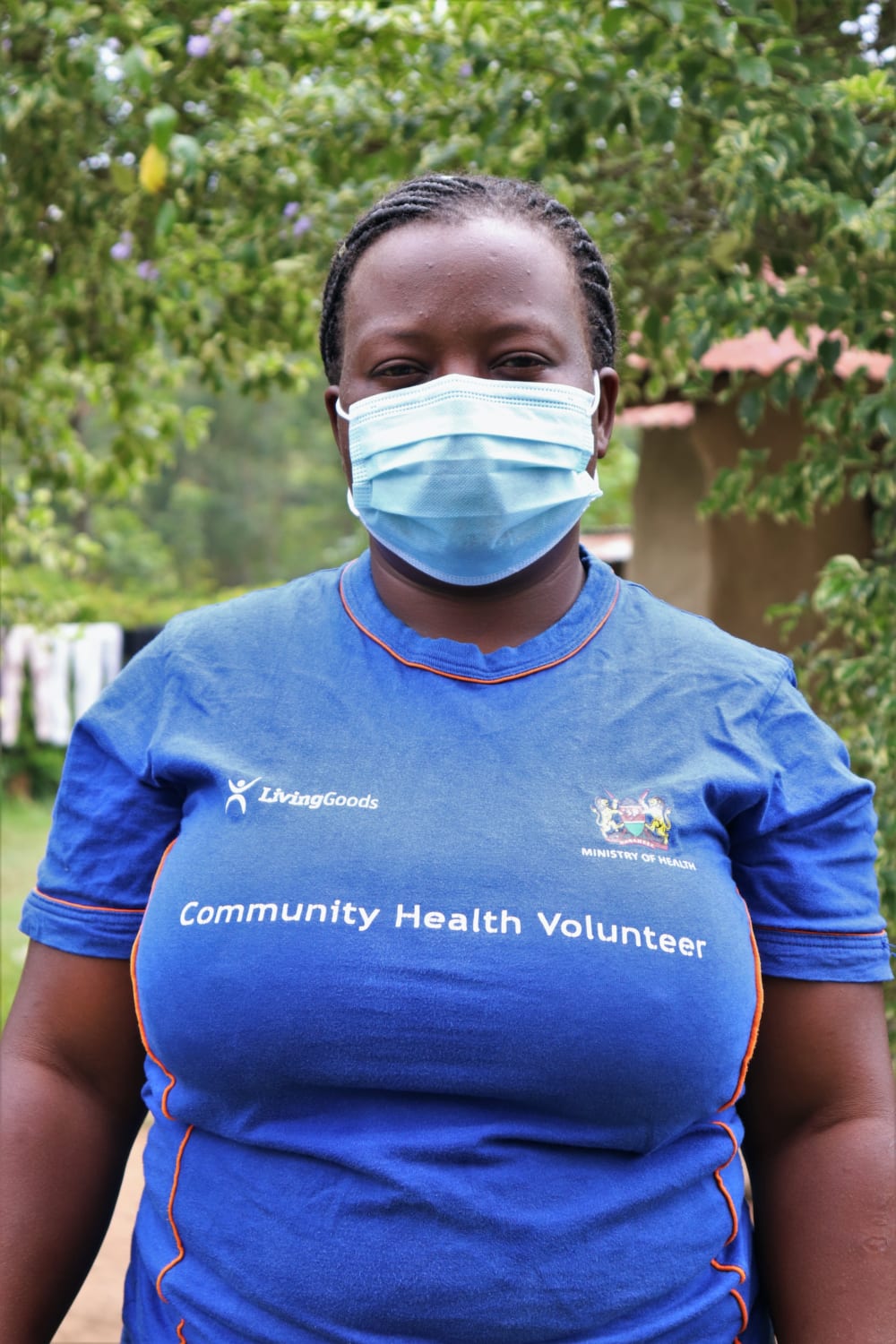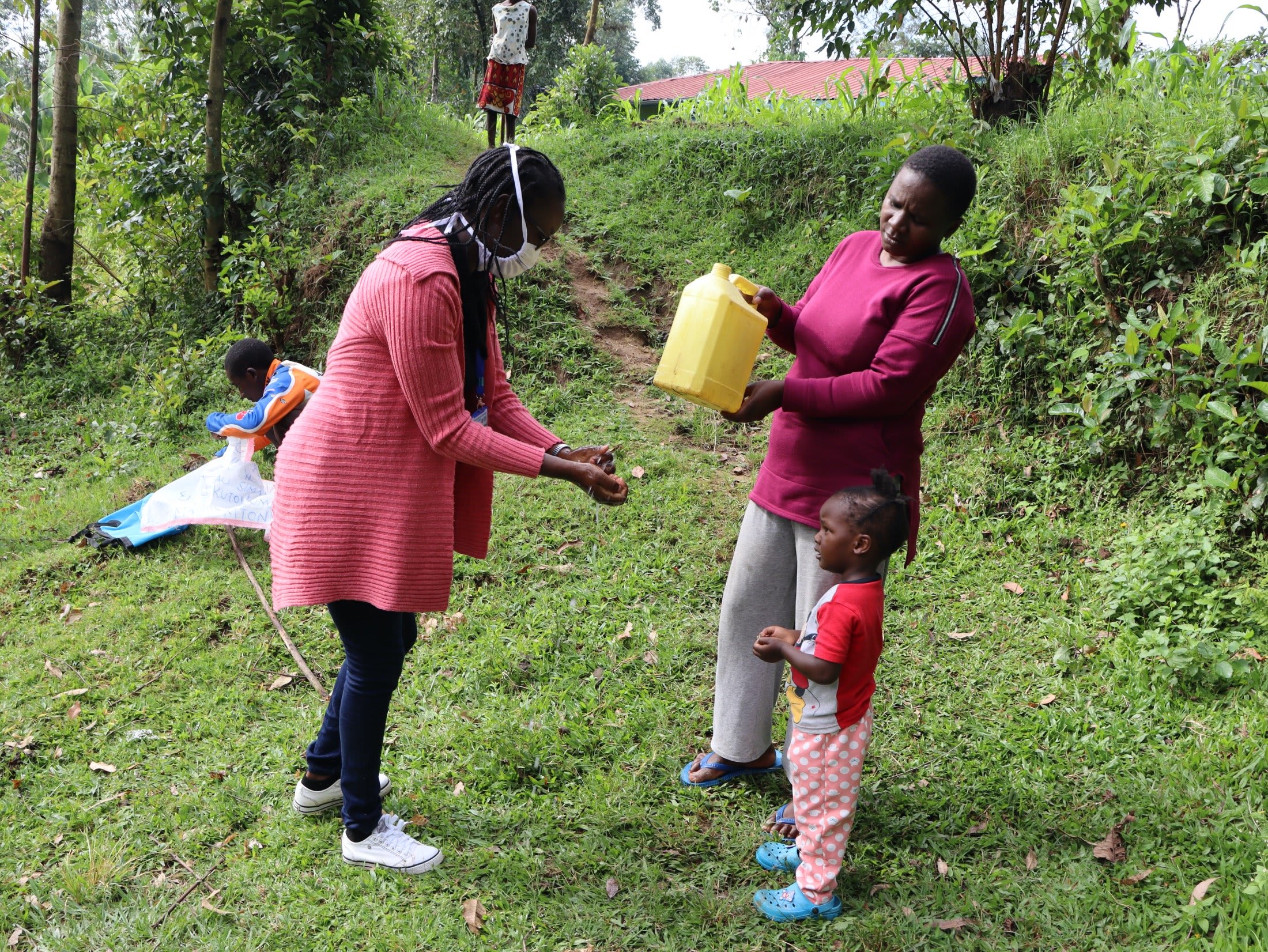This project is a part of our shared program with Western Water and Sanitation Forum. Our team is pleased to directly share the below report (edited for clarity, as needed).
BACKGROUND INFORMATION
This unprotected spring is located in Muraka village, Muraka sub-location, Ilesi location, Isukha west ward, Kakamega-East sub-county, Kakamega County. The spring is serving a total population of 1027 individuals comprising of community members and pupils from Muraka primary school which does not have access to safe drinking water at the school. It serves 610 community members of which 285 males and 325 females and 417 pupils of which 210 are girls and 207 are boys.
(Editor's Note: While this many people may have access on any given day, realistically a single water source can only support a population of 350-500 people. This community would be a good candidate for a second project in the future so adequate water is available. To learn more, click here.)
The community uses water for drinking, cooking, watering animals, and irrigation on the farms especially during the dry period. The spring is a good candidate for protection because it has a continuous supply of water even during dry season when other sources are completely dry. The community members and pupils of nearby school congest at the spring.
JUSTIFICATION
This unprotected water spring is located in a low area and is also surrounded by bushes, thus susceptible to contamination. Many people who lack latrines use the bushes for privacy and defecate close to the water point. During the rainy season the surface run off carries the waste into the water.
The community members reported that they have suffered from water borne diseases such as typhoid. This is a result of drinking water from the unprotected spring. Since the spring is unprotected, it is open to contamination by surface run off, people stepping into the water as they fetch, passersby drinking the water directly from the source, and animals also drinking from it.
A lot of time is also wasted by the women, children and also pupils from Muraka primary school queuing in order to fetch water.
Sanitation is also a big problem as many people do not have good latrines and others even use bushes. During the rainy seasons, the waste is washed into the spring leading to contamination of the water.
The community members are in dire need of support and are urging WEWASAFO and The Water Project to consider them and protect the spring so that they can reduce cases of water borne diseases and also reduce time wasted in order to engage in other economic activities.
Results of the Project: spring protection
Protection of Aliuba spring is now complete and in use.
The water is used for drinking, cooking, watering animals and irrigation on the farms especially during the dry period. The discharge from the spring is good and does not dry during dry seasons when other sources around the area are completely dry.
Cases of water borne diseases like typhoid which the community members reported to have suffered initially as a result of drinking unsafe water are expected to reduce because of the protection of the spring. Again, cases of contamination by surface run off, people stepping into the water as they fetch, passersby drinking the water directly from the source and animals drinking from it are all now a thing of the past after protection. The trained water Sanitation and management committees around the spring came up with the rules and regulation to govern the use of the spring so as to ensure its sustainability.
The community members around Aliuba spring are happy with the project and urged Wewasafo to protect other unprotected springs in the area so as to increase access to safe, adequate, clean drinking water.
Household sanitation platforms
The sanitation platforms (cement slabs for latrine construction) for the beneficiaries around Aliuba spring have been cast, installed and are now in use serving a total number of 46 people of which 21 are male and 25 are female. The community members admitted that it is comfortable using the slab because the floor is safe, easy to clean and maintain. They added that there are more community members who are in need of the slabs.
 Protected Spring
Protected Spring
 Rehabilitation Project
Rehabilitation Project































